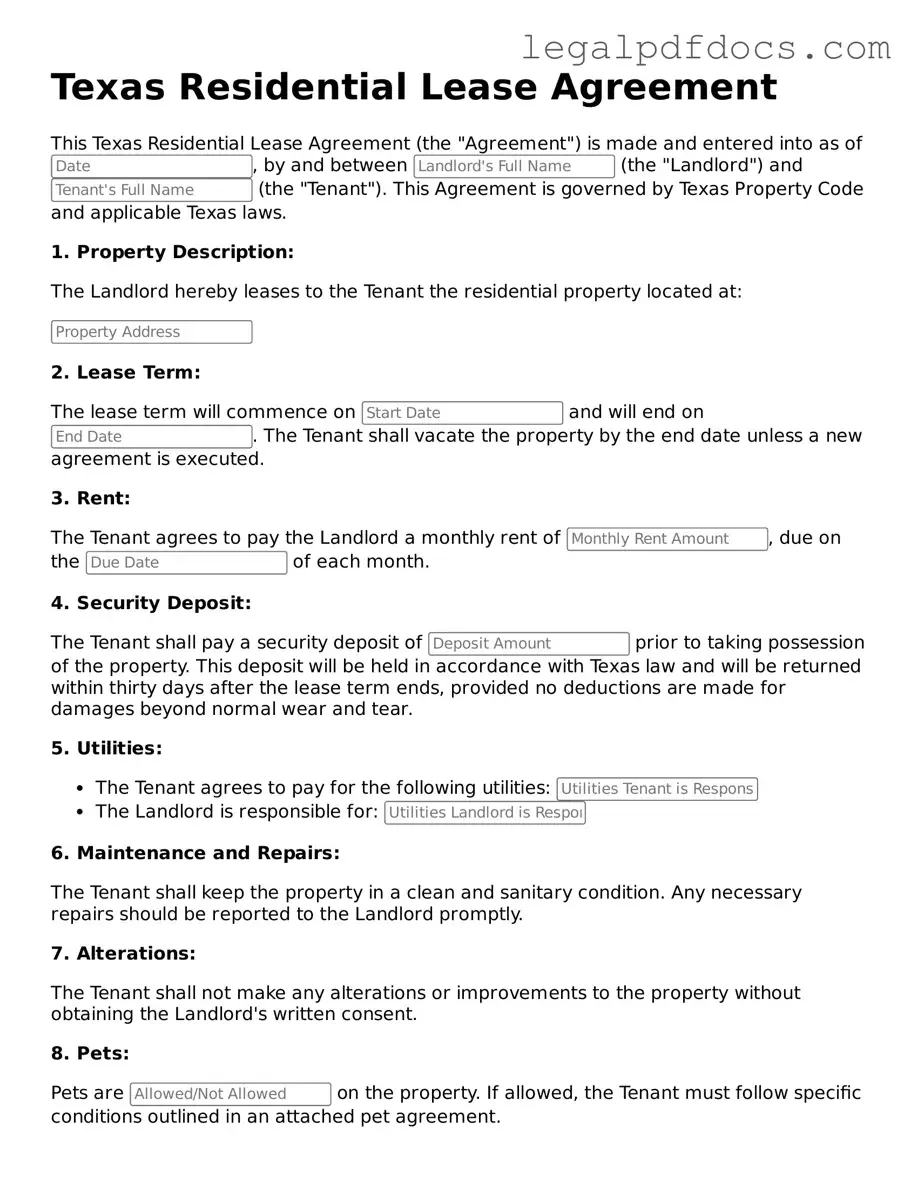Official Residential Lease Agreement Form for Texas
A Texas Residential Lease Agreement form is a legal document that outlines the terms and conditions between a landlord and tenant for renting a residential property in Texas. This form serves to protect the rights of both parties while providing a clear framework for the rental arrangement. To ensure a smooth leasing process, it is essential to fill out the form accurately; click the button below to get started.
Open Residential Lease Agreement Editor Here
